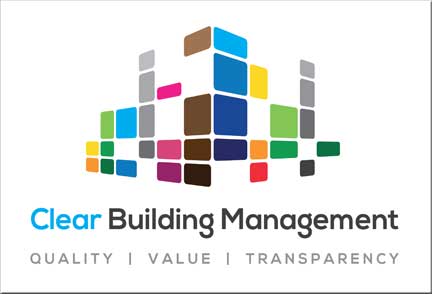
By Martin Boyd
A growing number of leaseholders are discovering that selling their flat has become more difficult. Prospective buyers need to obtain a valuation for their lenders. Now, on thousands of homes, this may mean they need something called an ‘Advice Note 14’ (AN14) report and it many cases these reports do not exist!
Many sites do not have these AN14 reports for a number of reasons, but without them surveyors are recording a “zero value” for the property.
This is causing absolute chaos in the market.
There is no consistency across the market. Some lenders are still happy to lend without an AN14 report while others are not. There is no obligation on landlords to produce an AM14 report and many, including the government, have argued that these reports are not needed. The only time the leaseholder is likely to find any of this out is when they try to sell.
The background to the “Independent Expert Panel” and AN14 An “independent expert panel” was set up in the summer of 2017, very shortly after the Grenfell tragedy, and has as its core members a number of fire experts.
The initial function of this panel was to advise the MHCLG Secretary of State. He needed to make various decisions as part of a range of measures to help improve building safety.
The independent expert panel has produced various Advice Notes published on the .gov website, which have consequently been interpreted as government policy.
AN14 is the most contentious and, while officials still assert that these Advice Notes are not intended to be used by lenders and valuers, the sector takes a different view.
AN14 appeared just before Christmas 2018 and initially had limited impact on the sector. It highlights matters to be considered by the “building owner” of blocks of a height of 18+ metres.
The wording that causes so many problems is “Building owners or their appointed competent professional advisor(s) should check that the external wall systems on their buildings are safe.”
The statement seems innocuous and perfectly logical, but neither a building owner nor a managing agent is qualified to make such a judgement.
Historically, assumptions on the building’s condition would have relied on the fact that the building had been signed off as compliant with building regulations at the time of construction, and was therefore intrinsically safe. The fire risk assessments made on many of these modern buildings would have focused on any changes to the original design. These assessments are unlikely to have gone back to basics and asked the fundamental question as to whether the materials used in the construction of “the external wall systems on their buildings are safe”.
Such an approach may not be sufficient to satisfy the requirements of AN14. So a surveyor may lack the certainty of compliance with AN14 to commit to anything other than a zero valuation. This does not mean that the property has no value, but that the surveyor does not have the necessary information to assign a specific value. The net effect as a result is that it is not possible to sell the flat if the lender demands an AN14 report when none exists.
Throughout 2019 the valuers and lenders have become more and more concerned as other Advice Notes from the expert panel have been published. Each of these Notes has made further changes to specific types of material regarding their safety.
AN19 required “building owners” to review spandrel panels.
Then AN22 told “building owners” to look at HPL panels.
Following the Barking fire, an unnumbered Advice Note required the “building owners” to review balconies.
Where are we now with AN14?
Valuers and lenders have inevitably become cautious and more are asking for proof of a building’s safety, including for provision of an AN14 report. The problem is that the vast majority of sites do not and could not have an AN14 report because AN14 did not exist until this year. To produce an AN14 report takes time and cost since materials on the building may also need to be tested.
Some landlords have been concerned that these costs may not be recoverable under the terms of the lease, particularly because different valuers and lenders have taken different views on whether an AN14 report is needed for a specific building.
Once a lender asks for an AN14 report, properties may become impossible to sell without one.
As the problem has grown over the year and we now see buildings below the 18 metre level, and even some without cladding, which have faced demands for AN14 compliant report. The market is taking a very inconsistent approach.
The most extreme case reported to LKP is of a managing agent being told that a sale had been lost due to a lender not being willing to lend without an AN14 report on a two-story brick-faced block.
Who is to blame?
As leaseholders have started to lose sales due to the lack of an AN14 report, the first person they blame is likely to be the managing agent, and then the landlord (or “building owner” to use the government’s chosen language).
However, leaseholders should understand that it is not the managing agent’s or the landlord’s or even the valuer’s or the lender’s fault.
The government is the cause of the problem. AN14 did not exist until this year and the government has not provided any clarification around it to explain which, if any, types of buildings need an AN14 report.
Everyone from the G15 group of large social sector landlords in London to the sector representative bodies has called on the government for clarification of AN14.
Some have even argued that AN14 should be put in the bin and the government should start again. Others have argued for a single collective set of advice which is updated when relevant.
The government has not yet responded to these sector-wide calls for clarity and seems unlikely to do so until the election is over.
To make matters worse, the government is now aware that the professional indemnity insurance which building safety experts need, to be able to produce these AN14 reports, has become much more difficult to obtain. The sector has told the government that some fire engineers are having their liability limited to £250,000.
What are the government and the sector doing to fix the AN14 problem?
Sadly at the moment, it appears the government is doing nothing.
AN14 has had no update since December 2018, and there is no clear indication whether an update is being produced.
By contrast, the sector has been working for months to find at least a partial solution. The valuers and their representative body the Royal Institute of Chartered Surveyors (RICS) have been working with groups such as ARMA to design a system that can provide a means of valuation which gets around some of the problems caused by AN14. LKP has been advised by RICS that “the guidance will be ready shortly”.
The wider impact of the costs of building remediation
Grenfell, tragically, made it clear why building safety must never again be ignored. However, as in the case of AN14, a one-size-fits-all approach to buildings means the ratcheting up of costs.
Another example of this approach is the government consultation’s suggestion of charging up to £100 per year for every flat for “building owners” to engage with residents about building safety.
If anyone is in any doubt we are facing some very large costs, the chair of the G15 group of London social sector landlords, Helen Evans, has highlighted the expected expenditure.
The G15 believes it will cost between £1.8 billion and £6.87 billion over 10 years for safety and safety remedial work across the 600,000 high and low rise homes which they manage. These costs will inevitably need to be passed on to the tenants via increased rents.
If a similar set of costs applies in the private sector and other non-G15 social landlords, then in total flats in England may be facing costs of between £5 billion and £20 billion.
The government statistics suggest we have 1.3 million high rise flats in total in England. If we were to be conservative we can assume at least 600,000 of these are in the private sector. Using the government’s estimate of the average flat price at £222,197 that means we currently have £133 billion of private property assets which currently potentially face a zero valuation problem because of AN14.





 Supreme Court blocks enfranchisement ploy that seems to be pure enrichment
Supreme Court blocks enfranchisement ploy that seems to be pure enrichment





















